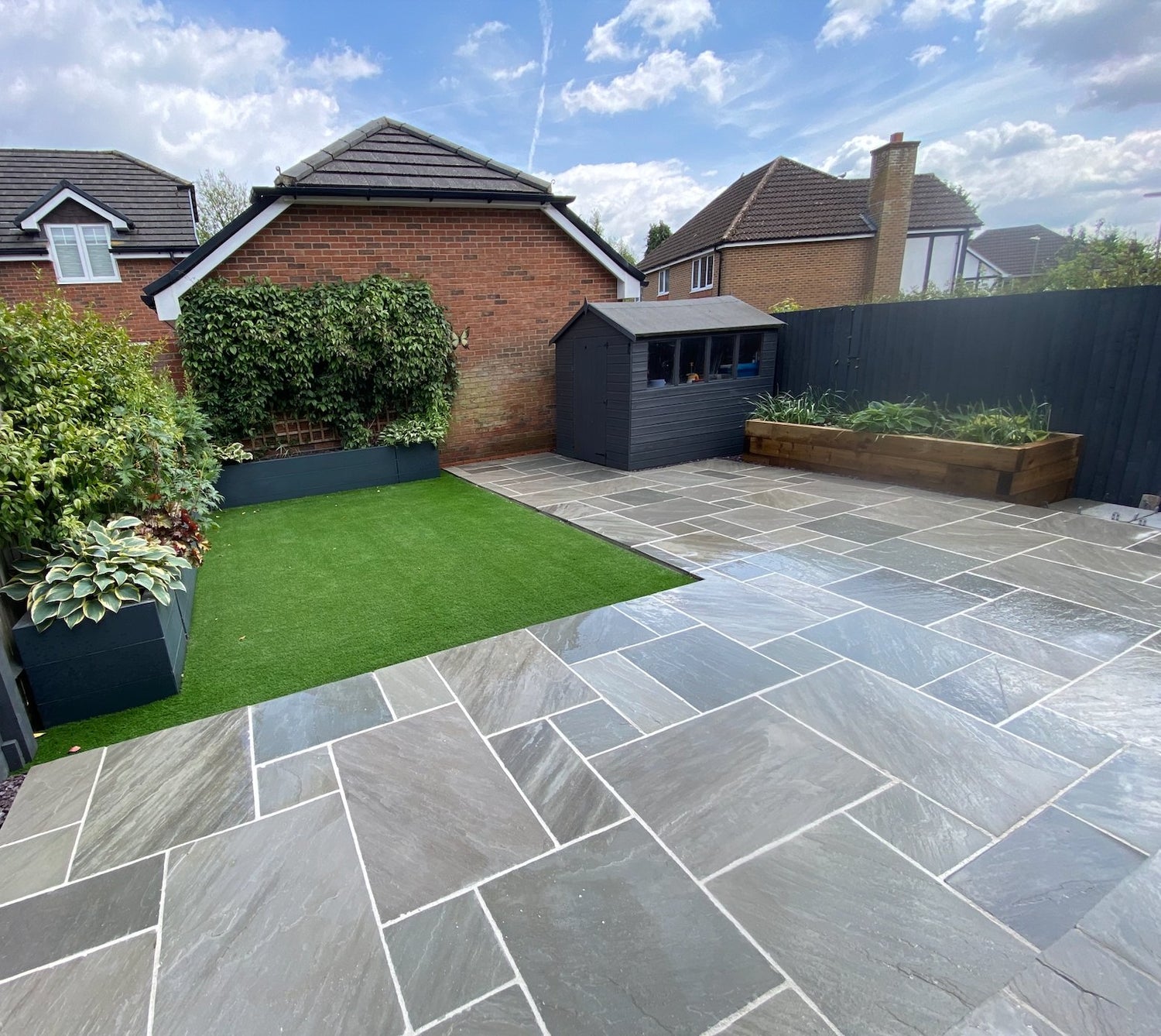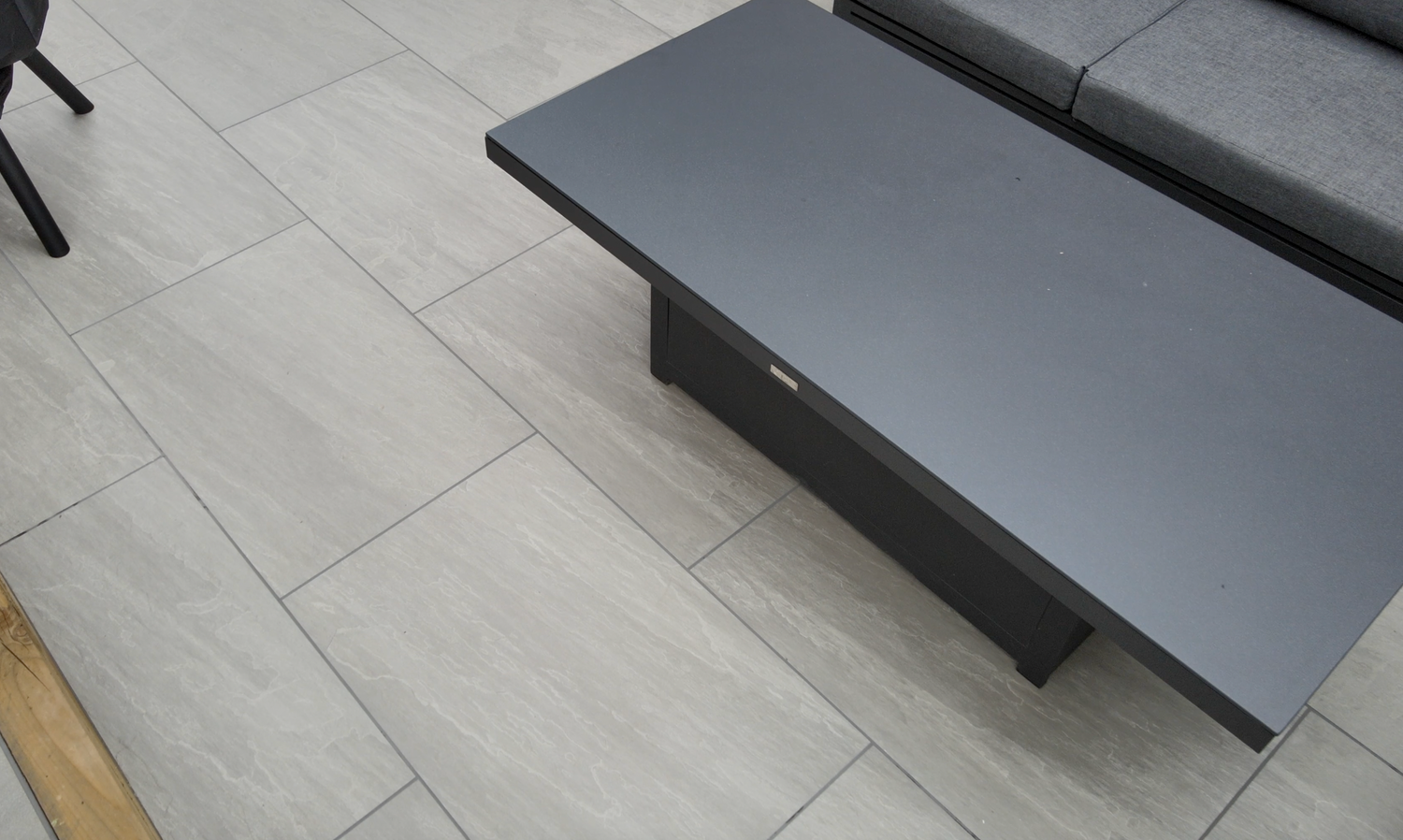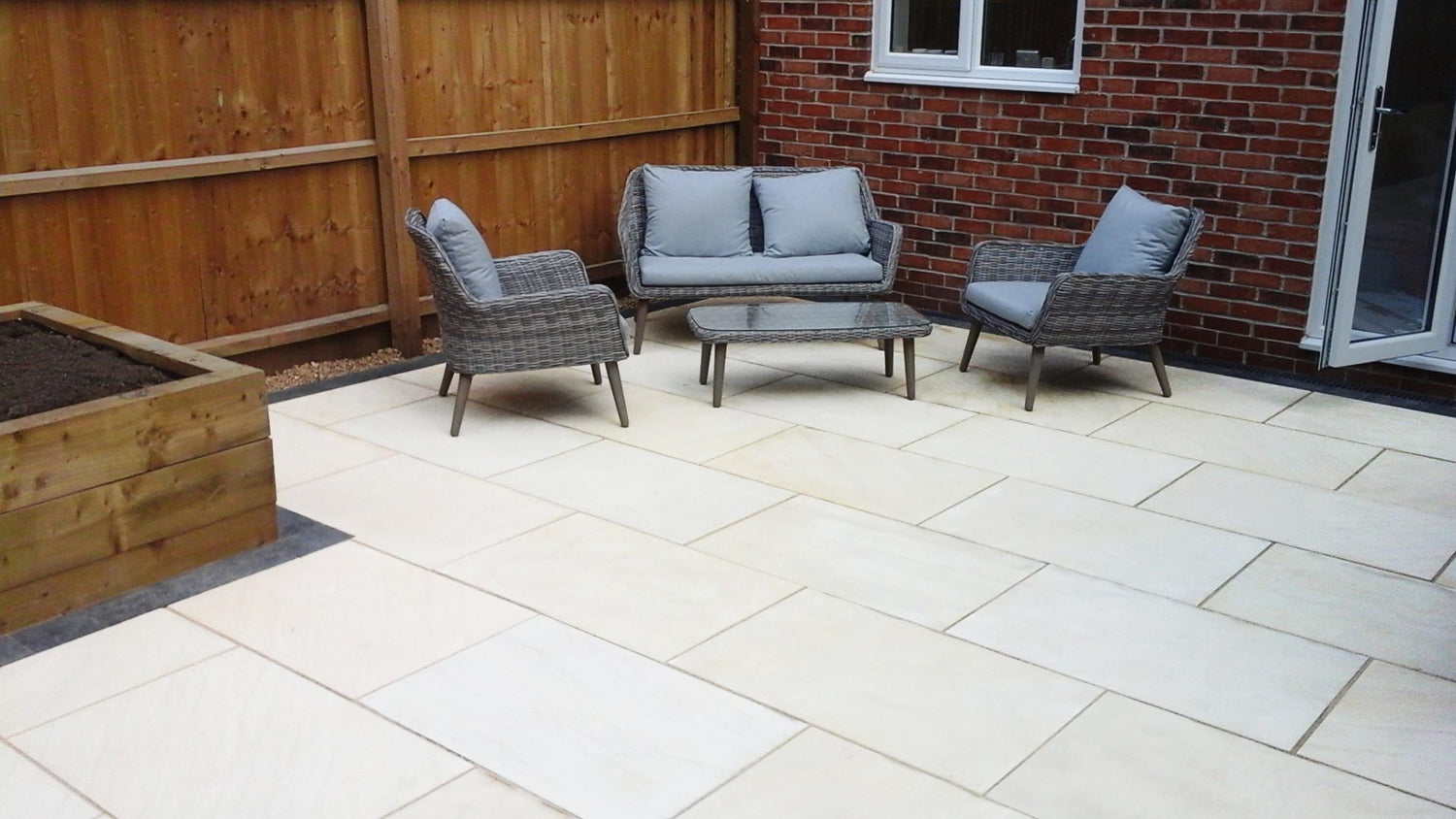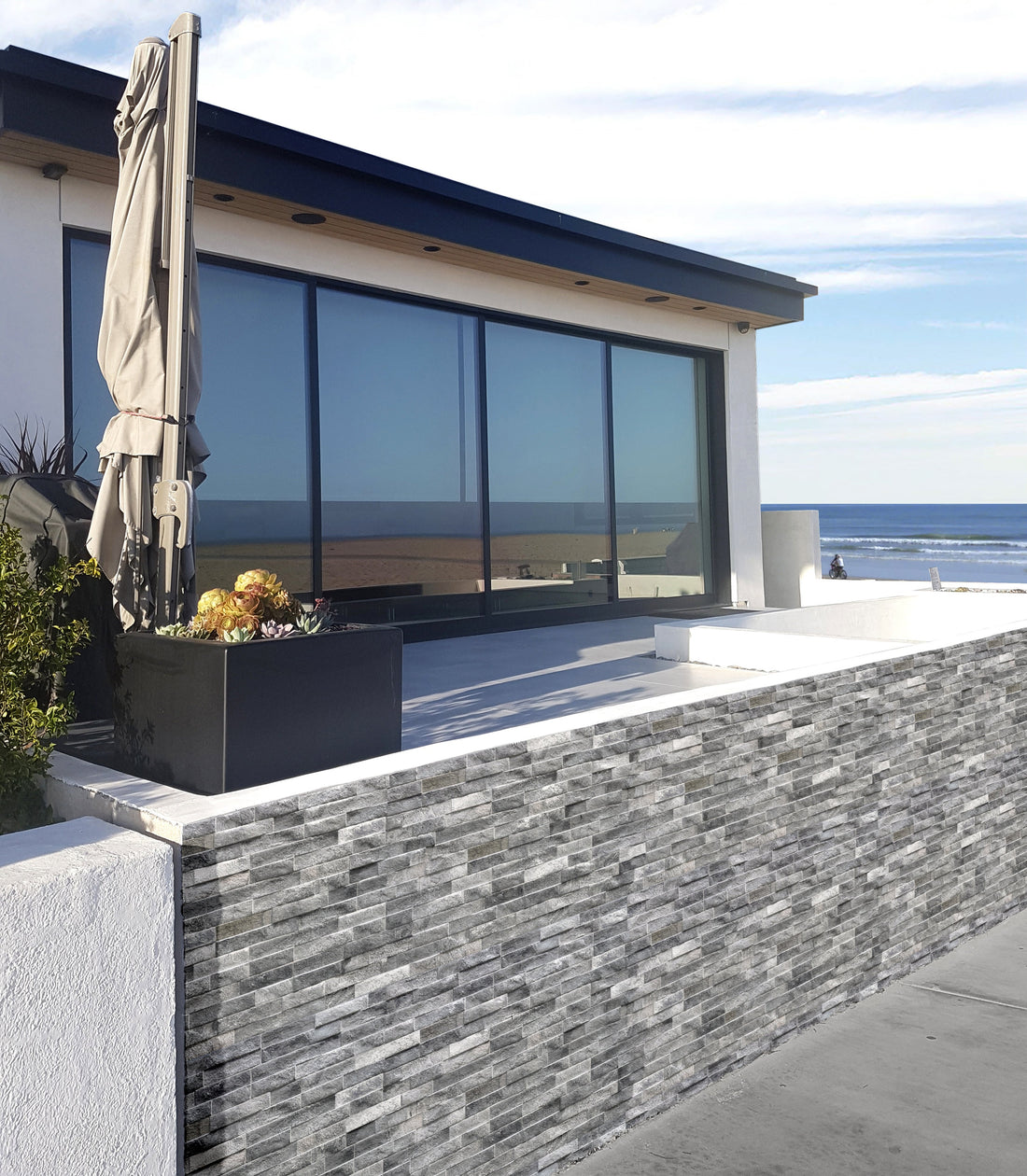
Inside‑Out Living & Patios: Inspired by George Clarke’s Kitchen vs Garden
Share
Inside‑Out Living & Patios: Inspired by George Clarke’s Kitchen vs Garden
Why Inside‑Out Living Is Having a Moment
If you’ve watched George Clarke’s Kitchen vs Garden, you’ll know the show champions homes that blur the line between indoors and out. The result? Light‑filled spaces, better daily living, and gardens that work as hard as your kitchen. This blog translates that on‑screen inspiration into practical, step‑by‑step patio advice—so you can plan a space that looks beautiful and performs in all British seasons.
Quick Wins from the Show (and How to Use Them at Home)
-
One floor level, inside to out: Aim for a seamless threshold so the eye reads one continuous plane. Use matching or complementary floor finishes and a low‑profile drain at the door.
-
Big openings: Bi‑folds, sliders, or a French‑door pair—choose wide glazing to frame the garden like a feature wall.
-
Zones, not rooms: Create a cooking zone, dining space, and a quiet lounge nook outside to mirror your kitchen’s functions.
-
Durable finishes: Select patio materials that can handle rain, frost and regular footfall without losing colour or grip.
Tip: Plan the patio first—even before kitchen layout—so services, levels and lighting all line up.
Choosing the Right Patio Slabs
1) Porcelain Paving (Low‑Maintenance Hero)
-
Why: High density, stain resistance and colour stability; ideal for a pristine indoor‑outdoor look.
-
Slip rating: Look for R11 or higher for safe all‑weather grip.
-
Thickness: Typically 20mm for exterior, 10mm for interior tiles if you’re matching finishes.
-
Style notes: Concrete‑look greys for a modern kitchen, limestone and travertine effects for softer schemes.
2) Natural Stone (Character & Texture)
-
Why: Sandstone and limestone bring warmth and unique veining.
-
Finish: Tumbled or riven for rustic charm; sawn and honed for a crisp, contemporary edge.
-
Care: Periodic sealing recommended to reduce staining and enhance colour.
3) Concrete & Design‑Led Options
-
Why: Budget‑friendly, consistent tone, and strong under furniture legs.
-
Upgrade: Mix sizes (e.g., 600×600 with 900×600) for a pattern that matches internal tile modules.
Pro move: If you’re matching interior tiles and exterior slabs, check batch codes and order at the same time to keep colour consistent.
Get the Levels Right (It’s the Make‑or‑Break)
-
Flush thresholds: Target a 10–15mm difference when using an external drain channel (A15 load class is typical for pedestrian use).
-
Falls & drainage: Build a 1:60 to 1:80 fall (12–17mm per metre) away from the house to prevent pooling and protect door thresholds.
-
SUDS‑friendly choices: Consider permeable jointing or a gravel sub‑base where appropriate. Speak to your installer about local rules.
-
Foundations: For patios on soil, a compacted MOT Type 1 sub‑base (100–150mm typical) plus a full‑bed mortar or external‑grade adhesive for porcelain.
Colour Palettes That Tie Kitchen to Garden
-
Warm neutrals: Cream cabinetry + beige/ivory slabs + brass lighting = calm, timeless.
-
Modern monochrome: Charcoal frames + mid‑grey porcelain + black accessories for a gallery feel.
-
Soft natural: Oak, sage paint, and sandstone with buff tones for a cottage‑modern crossover.
-
Bold contrast: Deep green units with pale limestone‑effect porcelain and terracotta pots.
Insider trick: Repeat your kitchen’s worktop tone in the step treads or coping to visually glue spaces together.
Zoning Your Patio Like a Pro
-
Cooking: Allow a heat‑safe area for BBQ or pizza oven; choose slabs with high thermal shock resistance (porcelain performs well).
-
Dining: 3×3m comfortably fits a six‑seat table. Add pendant‑style outdoor lighting or festoon lines overhead.
-
Lounge: Low seating & an outdoor rug define a relaxation zone without building walls.
-
Circulation: Keep a 900mm clear walking band from doors to lawn or side paths.
Lighting & Power (Plan Before You Pour)
-
Layered lighting: Combine low‑level step lights, wall washers, and a dimmable feature fitting near seating.
-
Sockets: Weatherproof twin sockets for blenders, laptop days, and fairy‑light controllers.
-
Smart control: Tie exterior circuits into the same app as your kitchen spots for one‑tap “Evening Mode”.
Edges, Steps & Details That Feel ‘TV‑Show’ Quality
-
Steps: Use matching bullnose or 30mm step treads for a crisp, safe edge.
-
Copings: Finish planter walls and raised beds with matching copings to echo your patio slab.
-
Threshold drains: A slim, stainless channel aligns with door track for a sleek look and water management.
-
Expansion joints: Every 3–5 metres on large porcelain installs to minimise movement stress.
Weather‑Proofing for British Seasons
-
Frost resistance: Select exterior‑rated slabs and adhesives; porcelain is typically frost‑proof.
-
Jointing: Use exterior, flexible grout or brush‑in jointing compounds; choose a tone that matches your slab.
-
Maintenance: Porcelain needs a gentle wash; stone benefits from sealing (enhancing or natural finish).
-
Furniture feet: Add protectors to avoid point‑loading and scuffing.
Budgeting & Phasing
-
Good‑better‑best: Start with the main patio now; add pergola, kitchen unit or fire bowl later without re‑doing foundations.
-
Bundle buys: Ordering all slabs, steps and copings together reduces batch variations and delivery costs.
-
Waste planning: Typical wastage allowance is 10% (go 12–15% for complex cuts).
FAQs
How do I match my indoor tiles to my patio?
Choose the same collection with indoor (≈10mm) and outdoor (≈20mm) thicknesses. Use a drain channel to keep the threshold almost flush and maintain a continuous sightline.
Is porcelain too slippery when wet?
Look for tiles/slabs rated R11 or marked as “external” for a grippy micro‑texture that’s safe in rain.
Do I need planning permission for a new patio?
Most ground‑level patios don’t need permission, but listed buildings, conservation areas, or drainage changes can trigger rules. Always check local guidance.
What’s the best colour for a north‑facing garden?
Lighter tones (ivory, light grey, buff) brighten shaded spaces and make them feel larger.
Your Inside‑Out Shopping List
-
20mm exterior porcelain or quality sandstone/limestone slabs
-
Matching steps, copings and edging pieces
-
MOT Type 1 sub‑base and bedding materials
-
External‑grade adhesive (for porcelain) or full‑bed mortar
-
Drain channel and accessories
-
Exterior grout/jointing compound
-
Outdoor‑rated lighting & sockets
CTA: Ready to Build Your ‘Kitchen‑Meets‑Garden’ Patio?
We supply premium patio slabs—porcelain, sandstone, limestone—and all the finishing details (steps, copings, edging) to create that Kitchen vs Garden look. Get a free sample and speak to our team for layout packs, take‑offs, and delivery across the UK.
-
Request free samples (match interior/exterior finishes)
-
Ask for a patio layout pack (we’ll suggest sizes and patterns)
-
Trade or homeowner? We support both—fast, reliable delivery.
Related Posts
-

The Mental Health Benefits of Creating an Outdoor Living Area & Patio
The Mental Health Benefits of Creating an Outdoor Living Area & Patio Discover how an outdoor living area or pat...
-

How Indian Sandstone is Mined: From Quarry to Your Garden
How Indian Sandstone is Mined: From Quarry to Your Garden Indian sandstone is a popular natural stone used across the...
-

The Ultimate Guide to Porcelain Grout: Perfect for Paving, Walling & Cladding
The Ultimate Guide to Porcelain Grout: Perfect for Paving, Walling & Cladding Porcelain tiles and slabs are rapid...
-

Transform Your Garden with a Standalone Water Feature: Benefits & Maintenance Tips
Transform Your Garden with a Standalone Water Feature: Benefits & Maintenance Tips Looking to add a touch of tran...
-

RHS Flower Shows 2025: Your Complete Guide
🌸 RHS Flower Shows 2025: Your Complete Guide The Royal Horticultural Society continues to wow visitors with its premi...
-

What to Consider When Choosing a Professional Landscaper for Your Perfect Outdoor Living Space
Title: What to Consider When Choosing a Professional Landscaper for Your Perfect Outdoor Living Space When it comes t...
-

Transform Your Outdoor Space with Porcelain Walling Cladding | Paving Shopper
Transform Your Outdoor Space with Porcelain Walling Cladding | Paving Shopper Are you looking to enhance your garden ...
-

Natural Sandstone Paving: Styles, Colours & Features for 2025 Garden Projects
🪨 Natural Sandstone Paving: Styles, Colours & Features for 2025 Garden Projects Meta description:Discover the tim...
-

Natural Sandstone Paving: Styles, Features & Why It Remains a Timeless Choice
🪨 Natural Sandstone Paving: Styles, Features & Why It Remains a Timeless Choice When it comes to paving that deli...
-

Top Landscaping Trends and Styles in 2025: What’s Hot in Outdoor Design
🌿 Top Landscaping Trends and Styles in 2025: What’s Hot in Outdoor Design As we move through 2025, the world of lands...
-

Why Composite Decking is a Smart Investment for Your Outdoor Space
Why Composite Decking is a Smart Investment for Your Outdoor Space When it comes to creating the perfect outdoor livi...
-

Why Choosing the Right Garden Designer is Crucial for Transforming Your Outdoor Space
Why Choosing the Right Garden Designer is Crucial for Transforming Your Outdoor Space When it comes to turning your g...
-

Kandla Grey Sandstone: The Timeless Patio Favourite for UK Gardens
Kandla Grey Sandstone: The Timeless Patio Favourite for UK Gardens Looking to transform your outdoor space with a mod...
-

Best Porcelain Paving for UK Gardens: A 2025 Guide
Porcelain paving has become the top choice for homeowners and landscapers across the UK—and for good reason. It’s sty...
-

Pros and Cons of Porcelain Pavers: A Smart Choice for Modern Landscaping
Porcelain pavers are gaining popularity in landscaping projects for their sleek appearance and long-lasting durabilit...
-

UK Garden Statistics and Trends 2024
UK Garden Statistics and Trends 2024 General UK Garden Statistics The vast majority of UK households have access to ...
-

Can I lay Paving on Soil or Mud?
Technically, yes – you can lay paving stones or slabs directly onto exposed topsoil however, laying a sub-base will e...
-

How Much Does a New Patio Cost?
A new patio in the UK typically costs between £80-£150 per square meter. For a 40-50 sqm patio, expect to pay £2,000-...
-

What Different Sizes Do Paving Slabs Come In?
When planning a patio or outdoor paving project, one of the key decisions is choosing the right size paving slabs. ...
-

Can You Pressure Wash Indian Sandstone?
Indian sandstone is a popular choice for outdoor paving due to its durability and attractive appearance. However, li...
-
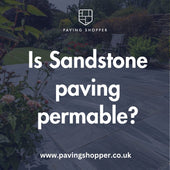
Is Sandstone Paving Permeable? Is it porous?
Sandstone's porous nature enables it to absorb rainfall, qualifying it as a permeable paving variety. However, seali...
-

Where Does Natural Sandstone Paving Come From?
Sandstone begins deep underground, formed over eras as minerals and sediments fused under pressure. Powerful forces ...
-

5 Paving Ideas for Small Gardens: Maximise Your Outdoor Space
Front of House When considering paving ideas for the front of your house, it's crucial to select ones that complem...
-

9 Paving Ideas for Front of House: Enhancing Curb Appeal with Style
The facade of a house plays a pivotal role in defining its character and curb appeal, and the choice of paving can s...
-

9 Summer Garden Paving Ideas UK
Summer gardens offer a vibrant canvas for homeowners to express their style while enhancing outdoor living spaces. G...
-

8 Garden Paving Ideas for 2024
It's time to refresh your garden's look for 2024 and an easy way to do that is with some new paving. With so many opt...
-
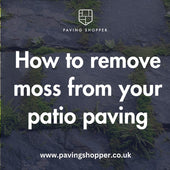
How to remove moss from patio paving
Moss growth is a common issue for patio paving, especially in damp, shaded areas. While moss may seem harmless, it ca...
-

How much does sandstone paving cost?
When choosing new garden pavers, sandstone offers homeowners an enticing middle-ground - more durable than basic conc...
-

Why Do Paving Slabs Crack And How To Repair Them
Seeing cracks appear on your patio or driveway can be disheartening after investing time and money into installing be...
-

How to lay paving in winter (Tips & Tricks)
How Cold Temperatures Impact Paving Projects The primary concern when working in cold weather is ensuring proper curi...
-

Sub Bases For Patios
Building the Perfect Patio Base: A Comprehensive Guide When planning an outdoor living space, understanding proper ba...
-

Pros and Cons of Porcelain Paving
Are you considering adding porcelain paving to your outdoor space? It's important to weigh the pros and cons before ...
-

Understanding Paving Slip Ratings: A Comprehensive Guide
A paving slip rating, also known as a slip resistance or anti-slip rating, is a measure of how slippery a surface...
-

Stunning Garden Water Feature Ideas - Enhance Your Outdoor Space
Garden water features are decorative elements that incorporate water into a garden, adding beauty and a sense of ...
-

How to Stop Weeds in Block Paving: Expert Tips andTricks
Weeds growing between the blocks of your paving can be an unsightly and frustrating problem. Not only do they make y...
-

How to clean paving without a pressure washer
A patio cleaner is a cleaning solution designed specifically for removing dirt, grime, and stains from outdoor patio...
-

How to Grout Paving Slabs – Expert Tips and Techniques
Pointing paving slabs is an important step in the process of installing them. Grout is a mixture of cement, water...
-

Block Paving Guide | What Does it Cost? | How Much Per m2?
Block paving is a versatile and durable option for creating driveways, patios, and paths. This method involves using...
-
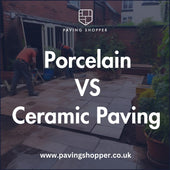
Porcelain VS Ceramic Paving
Porcelain paving is non-porous and more durable than ceramic paving, which is more porous and prone to stains and wea...
-
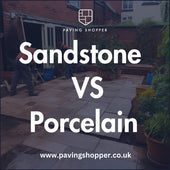
Sandstone V Porcelain Paving - (Style Comparison and Distinctions)
When choosing materials for your patio or driveway, two of the most popular options are sandstone paving slabs and p...
-

Understanding Gradients and Falls for Paving and Drainage (2024)
When it comes to paving and drainage projects, understanding the correct gradients and falls is essential for ensuri...
-
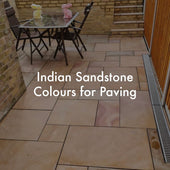
Indian Sandstone Paving Colours for A Patio - A Comprehensive Guide
Indian sandstone is one of the most popular paving materials, celebrated for its natural beauty and the variety of co...
-

Jointing and Pointing For Paving (Sand & Cement Mix)
Patio pointing is important for both looks and durability. It protects the layers under your paving, stops weeds, and...
-

How to Lay Paving on Sand and Cement: Expert Advice and Tips
Paving on Sand and Cement: A Comprehensive Guide When it comes to enhancing your outdoor space, paving is a popular ...
-

Pros and Cons of Sandstone Paving
Pros & Cons of Indian Sandstone Paving Indian sandstone paving is a natural and durable option that adds both bea...
-
Does Patio Paving Need Edging? A Comprehensive Guide
In this article, we'll explore the importance of patio edging, the different types of edging materials available, and...
-
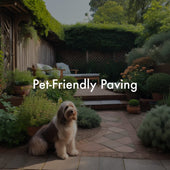
Pet Friendly Paving - What is the best paving for a dog-friendly garden?
Creating a dog-friendly garden requires choosing the right paving materials to ensure your furry friends can enjoy t...
-

Patio Paving Laying Patterns Guide
Paving patterns can transform an ordinary outdoor space into a stunning and eye-catching area that complements your ...
-

Patio Kits vs Single Size Paving Slabs: Which To Choose?
When designing a patio or outdoor space, one crucial decision is whether to use a patio kit (also known as patio pack...


















































